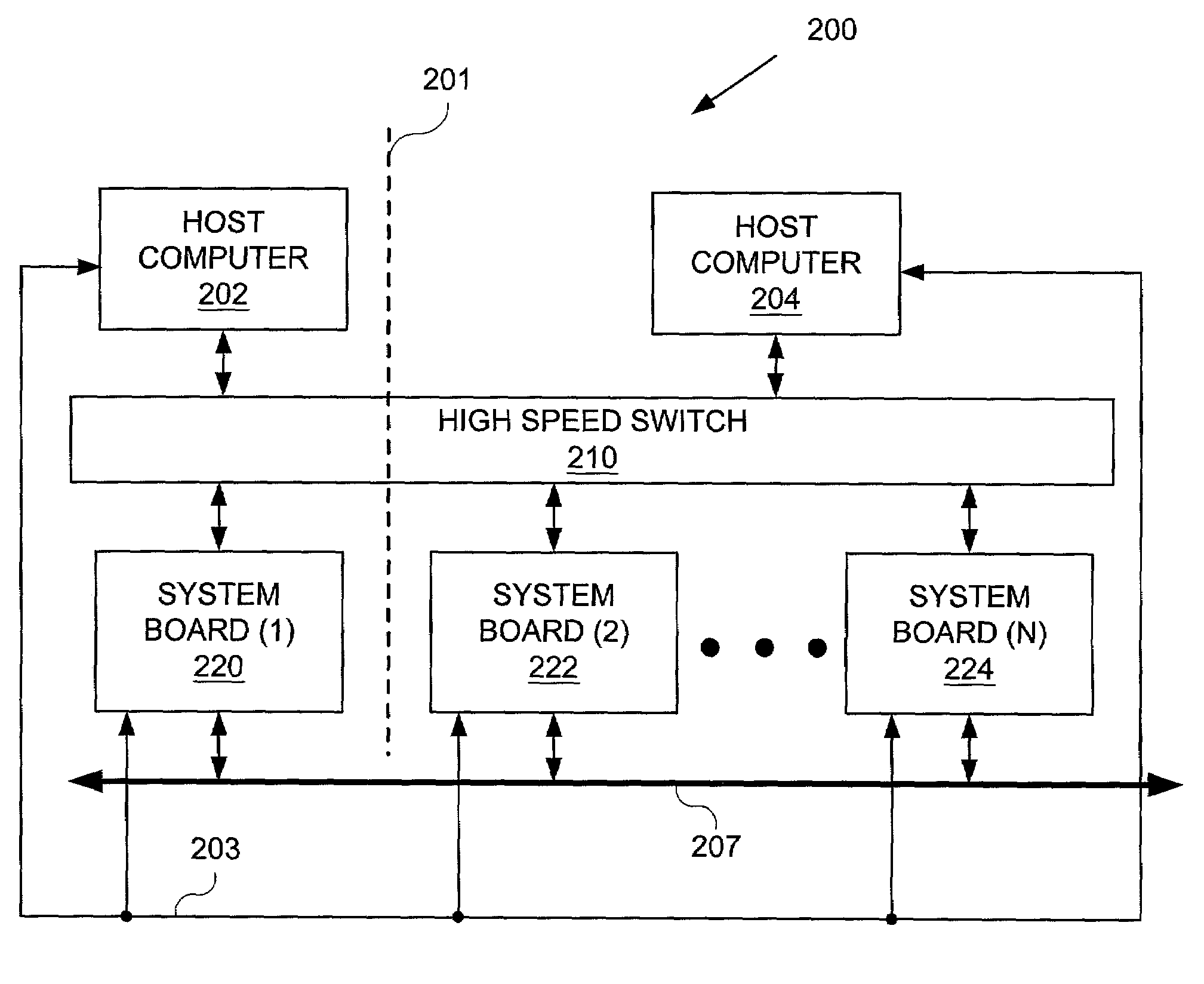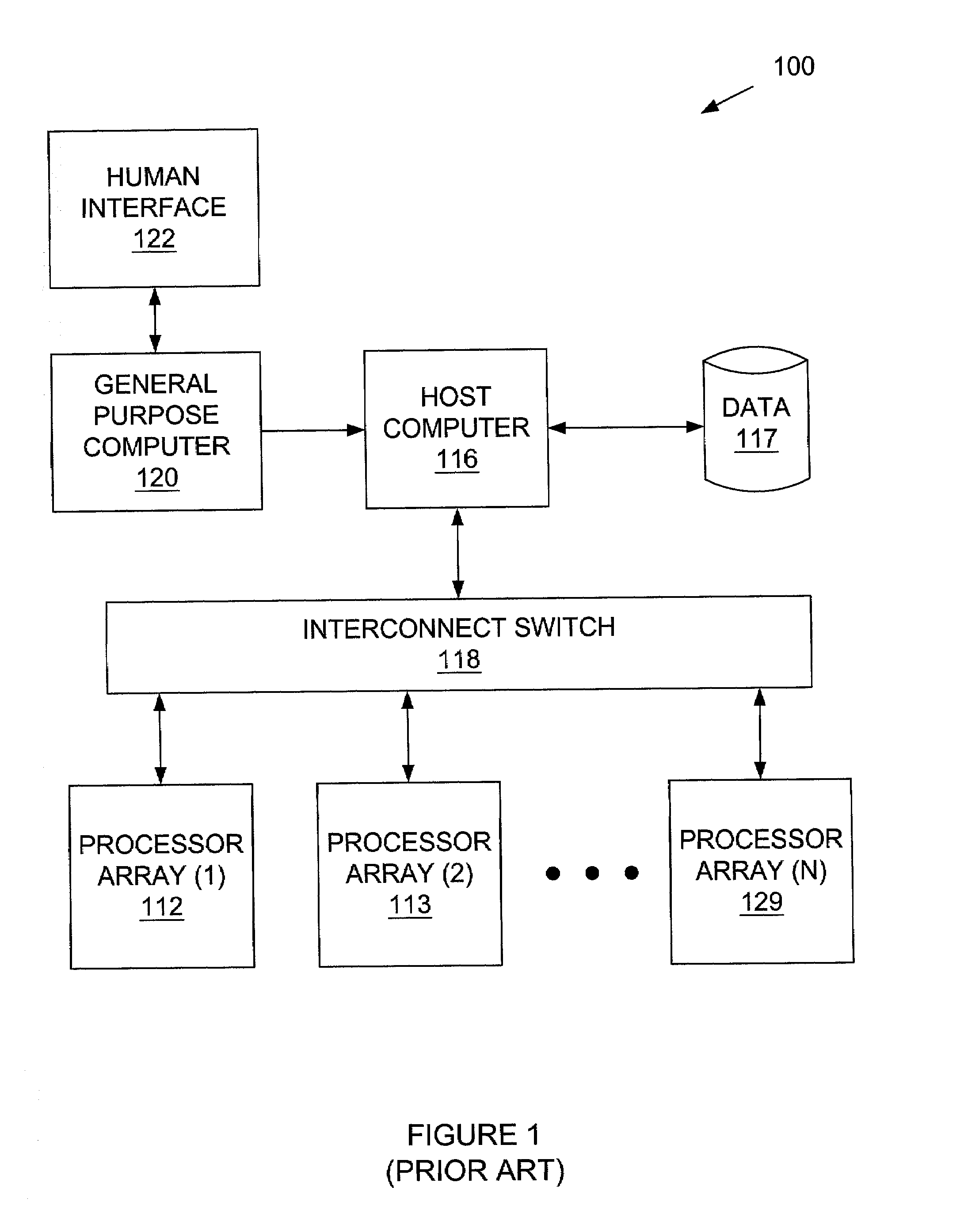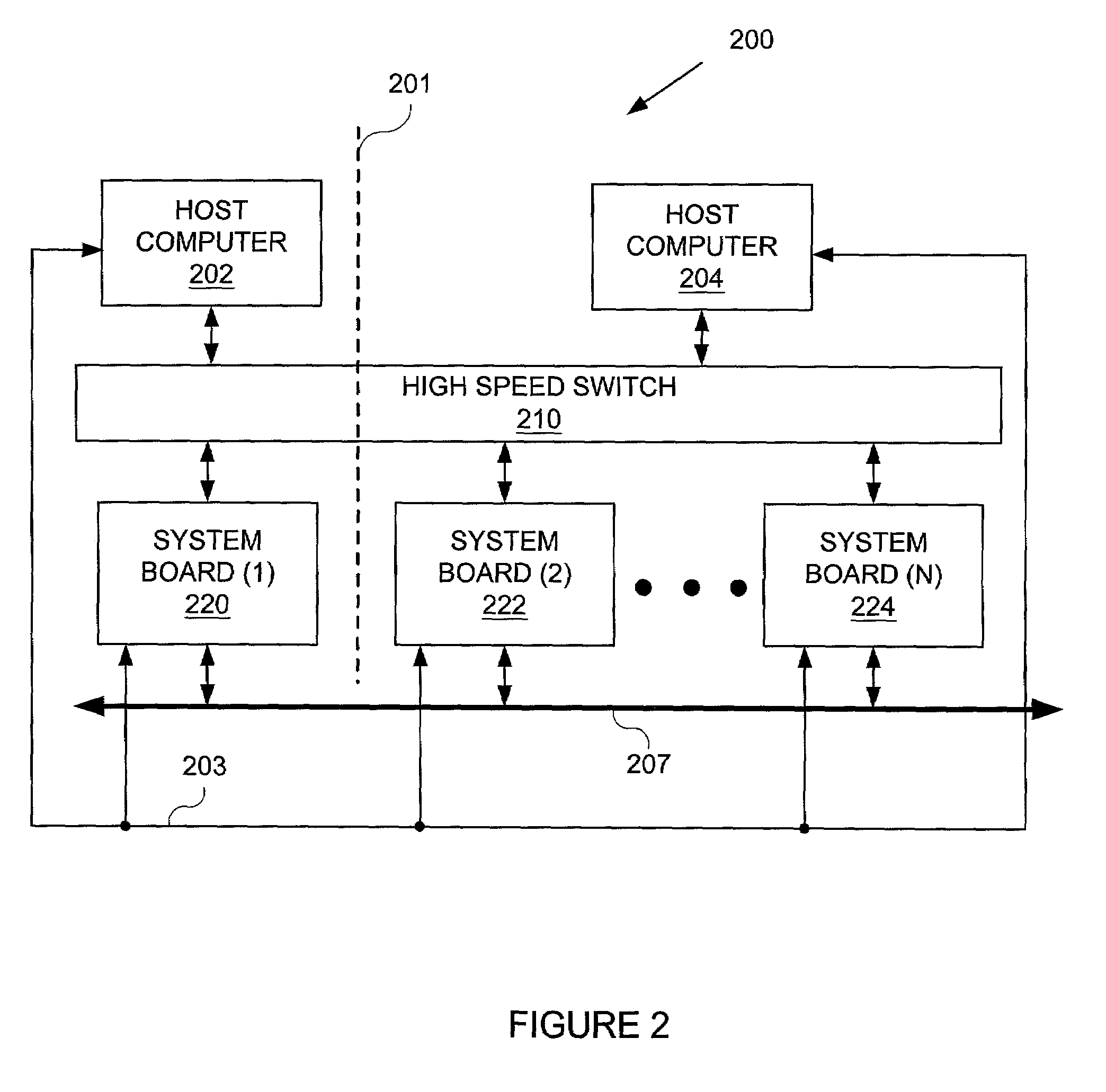Method and apparatus for cycle-based computation
a cycle-based computation and cycle-based technology, applied in the field of simulation of microprocessor performance, can solve the problems of increasing the time required to determine failure mechanisms, increasing the number of logic errors that escape detection before the cpu is manufactured, and increasing the number of failure modes
- Summary
- Abstract
- Description
- Claims
- Application Information
AI Technical Summary
Problems solved by technology
Method used
Image
Examples
Embodiment Construction
[0041]The present invention is a method and apparatus for cycle-based computation in a simulation system. In the following detailed description of the invention, numerous specific details are set forth in order to provide a more thorough understanding of the invention. However, it will be apparent to one of ordinary skill in the art that the invention may be practiced without these specific details. In other instances, well-known features have not been described in detail to avoid obscuring the invention.
[0042]Specific embodiments of the invention will now be described in detail with reference to the accompanying figures. Like elements in the various figures are denoted by like reference numerals for consistency.
[0043]Before describing in further detail cycle-based computation in a simulation system, a computer execution environment and a class of simulation systems (e.g., multiple instruction, multiple data (MIMD)) used with one or more embodiments of the invention is described bel...
PUM
 Login to View More
Login to View More Abstract
Description
Claims
Application Information
 Login to View More
Login to View More - R&D
- Intellectual Property
- Life Sciences
- Materials
- Tech Scout
- Unparalleled Data Quality
- Higher Quality Content
- 60% Fewer Hallucinations
Browse by: Latest US Patents, China's latest patents, Technical Efficacy Thesaurus, Application Domain, Technology Topic, Popular Technical Reports.
© 2025 PatSnap. All rights reserved.Legal|Privacy policy|Modern Slavery Act Transparency Statement|Sitemap|About US| Contact US: help@patsnap.com



